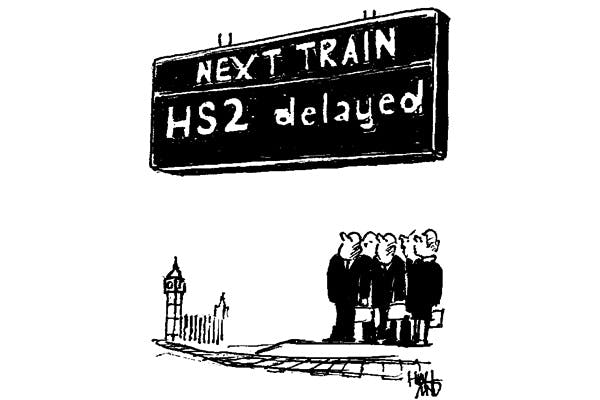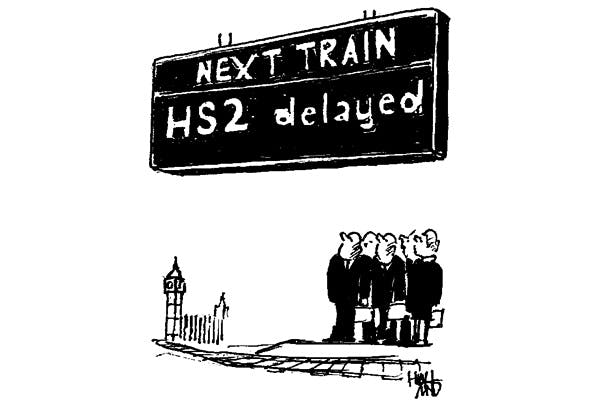If I stand on the forecourt of Euston station tomorrow morning, I will be able to get to Manchester by high-speed train in 20 years, one hour and eight minutes. That’s only 19 years, 364 days and 23¾ hours longer than it took me last month.
But at least we know that 17 June 2033, the day earmarked for the opening of the London to Manchester High Speed Rail service, will be a nice, sunny day. As the inaugural train pulls out of Euston, it will travel under clear blue skies until the train reaches Birmingham (scattered clouds: chance of precipitation 20 per cent).
We know this, because, of course, we can forecast the weather 20 years in advance. Well at least we should be able to do this, since economic forecasters can clearly predict the demand for travel 20 years ahead. This same infallible skill also tells us that the economic effects of HS2 will spread wealth from London to the north — rather than in the other direction. Because, we know, don’t we?
We know nothing of the kind. Which is why the ludicrous 20-year timescale for HS2 should cause us to abandon the whole thing. Not only out of shame (Brunel built a railway to Bristol in five years, when the principal tunnelling technology was a navvy with a pick) but for another reason too.
The distinction here is between ‘optimality’ and ‘optionality’. Investment in a rail line may be ‘optimal’ — in terms of speed, comfort or convenience, given some startlingly confident assumptions about the future, but these predictions become increasingly unreliable the further into the future you peer. This uncertainty matters less if the investment has a range of uses, but HS2 doesn’t: it offers almost no ‘optionality’ at all. The train line, whatever happens, will only be able to do one thing: carry people (not freight) very fast between three or four pre-ordained points. That’s it. You can’t even add new stations to a high-speed rail line easily, as a train’s efficient running requires infrequent stops.
By contrast, investment in an airport or a fast road may not be ‘optimal’, but offers far more ‘optionality’. Let’s suppose that, in 2033, Liverpool is a more important city than Manchester. The most popular tourist destination in the world is now Spitzbergen. Driverless electronic coaches are scuttling around the country with their occupants asleep, while drone-vans are delivering our goods.
Well, the fast roads and airports we build today might still reap gains from these developments. Unexpected advances in automotive technology may make fast, straight roads more valuable than we imagined. Planes which once took people to Malaga can be rerouted to Spitzbergen. But the train line has scant potential for unexpected upside: it is still ploughing its furrow between Manchester and London, in line with the deluded prognostications of a long-dead economic forecaster.
‘Ah, but,’ says George Osborne, ‘if the Victorians hadn’t built the railways, we wouldn’t have them now.’ But if the Victorians had anticipated the internal combustion engine, Brunel would have built the Great Western Road. Twelve lanes. With ornate, vaulted service stations every 20 miles.
When property developers build tower blocks, something which requires only a few years of planning, they often purposefully plan them so that they can be turned into office space or housing. This they decide as late as they possibly can. Following this logic, the sensible thing may be to clear a path for HS2 — but hold off on adding the tracks or buying the trains.
I’d be delighted to see £1 billion spent to make Euston station less of a dump. Rail has a great future in many ways. But HS2 probably shouldn’t be part of it.








Comments